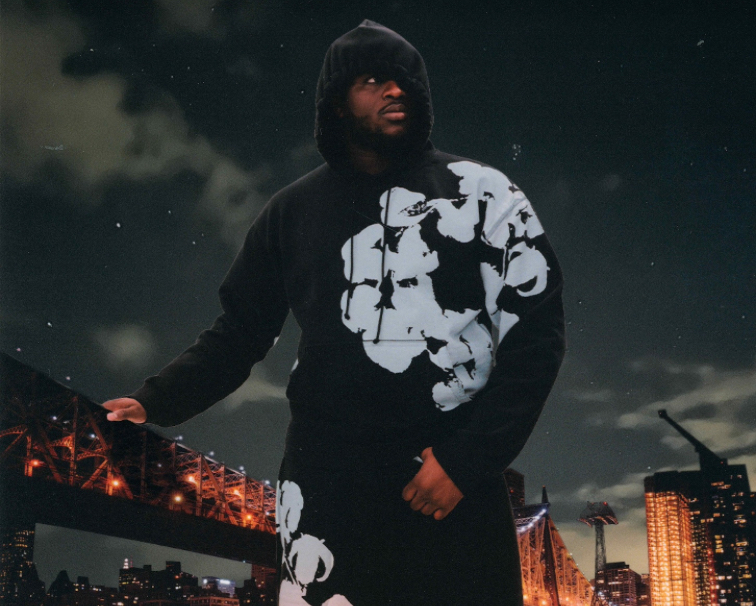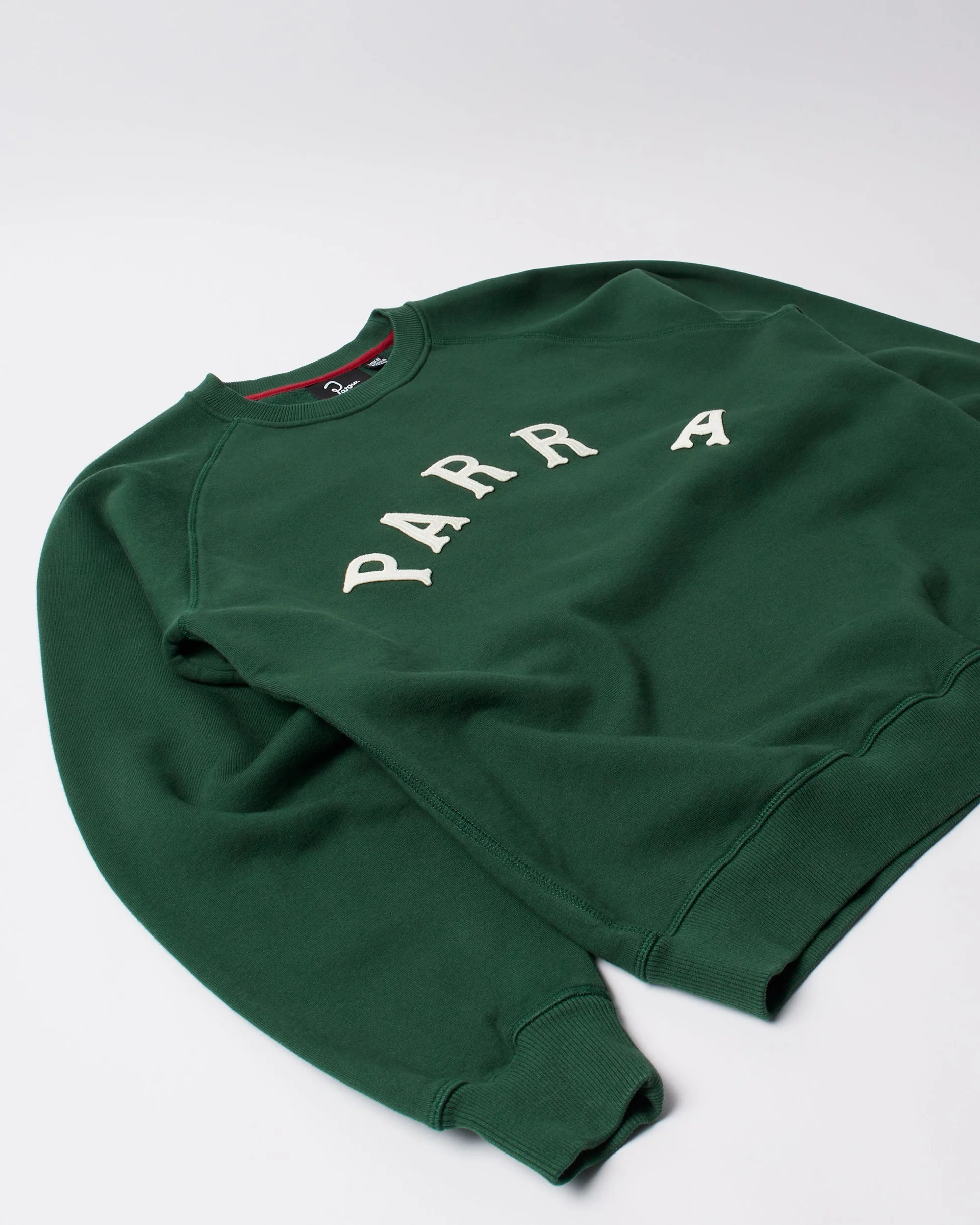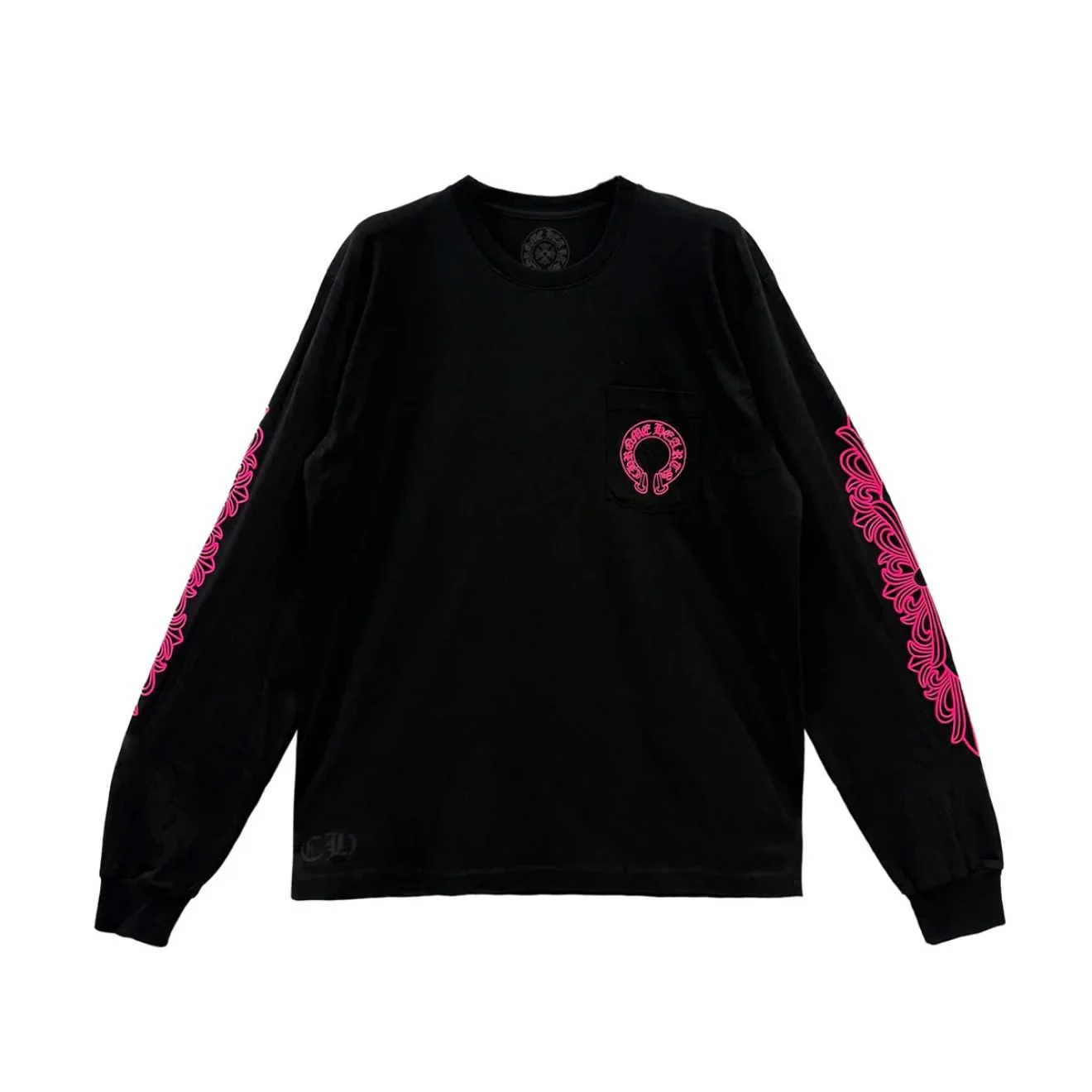In the fashion world, few designers are as uncompromisingly political and aesthetically purposeful as Tremaine Emory. As the creative force behind Denim Tears, Emory has consistently leveraged fashion as a medium to communicate the weight of African American history, particularly focusing on the legacy of slavery and the ongoing fight for racial justice in America. With the release of his newest offering, Big Cotton Wreath, Denim Tears once again intertwines symbolic visual storytelling with wearable art.
At first glance, the Big Cotton Wreath capsule looks deceptively simple. A wreath composed of cotton stalks encircles the Denim Tears logo, embroidered or printed across sweatshirts, t-shirts, and headwear. But behind the minimal design lies a history that is anything but soft. Cotton has long been a focal point of Emory’s work—used not only as a material but as a motif for reflecting the economic foundations of slavery in the United States. The wreath form—circular, solemn, commemorative—elevates that commentary into something ceremonial, almost funereal.
With Big Cotton Wreath, Denim Tears is not just making clothes. It is performing memory.
WHY COTTON STILL MATTERS
Cotton as a symbol carries deep historical resonance in the context of African American identity. From the plantation fields of the American South to modern global textile industries, the fiber is both a material and a metaphor—once a commodity extracted through the forced labor of Black people, now recontextualized as a banner of resistance and reclaiming.
Emory’s choice to double down on cotton in this release is no accident. In past Denim Tears collections, cotton plants have been printed across Levi’s denim jackets and stitched onto Champion sweats. With Big Cotton Wreath, the symbolism is centralized, magnified, and solemnized.
The wreath, long associated with mourning and reverence, places the cotton at the center of an unbroken cycle—a reminder of generational trauma and survival. In this way, Big Cotton Wreath functions not only as fashion but as a cultural monument.
FROM STATEMENT TO STANDARD: A VISUAL IDENTITY
Denim Tears’ aesthetic is unmistakable. Clean silhouettes—mostly oversized hoodies, varsity jackets, heavyweight t-shirts—form the canvas. The impact is carried in the message, conveyed through graphic prints, patches, and embroidery. Big Cotton Wreath introduces no new silhouettes, but rather reinforces Denim Tears’ commitment to a design language rooted in repetition, ritual, and reflection.
Key pieces in the drop include:
- Big Cotton Wreath Hoodie: Available in black and cream, featuring large back embroidery and chest prints. Crafted from heavyweight cotton and finished with ribbed cuffs.
- Wreath Long Sleeve Tee: Printed with the wreath across the chest, with additional typography detailing Black economic history.
- Snapback Cap: Minimal, yet loaded—black cap with tonal embroidery of the cotton wreath, paired with Denim Tears branding on the side panel.
- Crewneck Sweatshirt: Simplified, logo-focused piece, echoing Emory’s previous capsule releases but updated with a softer fleece composition.
What’s striking is the absence of spectacle. This is not a drop designed for TikTok virality. It’s for the streets, for the archives, and for those attuned to the deeper resonances of Emory’s visual language.
LAUNCH TIMING AND STRATEGY
The launch of Big Cotton Wreath coincides with a broader conversation around labor, reparations, and cultural ownership. April is both a spring awakening in the fashion calendar and, in the U.S., a month of increasing discourse around African American history—especially as Juneteenth approaches.
Denim Tears chose to release the collection via its own website and a curated series of cultural stockists, including Union Los Angeles, Dover Street Market, and Concepts, all known for championing socially conscious fashion. Early buyers were offered access through a lottery system, limiting bots and maximizing community-based distribution.
To complement the release, Emory shared a short visual essay titled Wreaths of Our Ancestors, filmed in rural Georgia, where descendants of enslaved Black Americans narrate their family histories. The film was produced in partnership with the Equal Justice Initiative and streamed exclusively on the Denim Tears site during launch weekend.
TREMAINE EMORY: DESIGNER AS HISTORIAN
Emory has always positioned himself not only as a designer but as a cultural historian and provocateur. His previous collections tackled themes of colonial extraction, Pan-African unity, and Black Southern memory. But what sets Big Cotton Wreath apart is its ceremonial clarity—it feels like a eulogy stitched into cotton.
Having stepped down from his role as creative director of Supreme in 2023 after citing issues of internal racial dynamics, Emory doubled down on his own brand. Denim Tears, in many ways, represents the purest expression of his worldview: art that wears its politics not as subtext but as fabric.
He describes Big Cotton Wreath as “a meditation on circular grief and the eternal revolution of Black resilience.” His goal, as always, is to force conversation—whether at a protest or in a boutique fitting room.
A DESIGN FOR REMEMBRANCE
What makes Big Cotton Wreath notable beyond its symbolism is how successfully it integrates commemoration into streetwear. Where most fashion is forward-facing—obsessed with futurism, technology, and trend—Emory looks back. And in looking back, he asks the wearer to reckon with what they’re really putting on.
The pieces are designed to be lived in. The hoodie isn’t some limited-run collector’s piece meant for glass casing. It’s meant to be worn to protests, to cookouts, to the grocery store. That democratization of sacred symbolism is part of Denim Tears’ power—it invites daily ritual, not just curated moments.
And unlike many politically inspired drops, Big Cotton Wreath doesn’t shout. It stands still. And in that stillness, it demands your attention.
COTTON IN CONTEXT: FASHION’S COMPLICATED MATERIAL
It’s worth noting that cotton remains one of the most controversial materials in global fashion. From environmental concerns tied to water consumption to exploitative labor practices across production regions, the modern cotton supply chain is fraught.
Emory is aware of this complexity. Denim Tears sources its cotton garments from manufacturers who meet ethical labor standards, and in interviews, he’s acknowledged the irony of using cotton—both a symbol and a scar—as his core medium.
But it’s precisely that irony that gives Big Cotton Wreath its urgency. It doesn’t attempt to solve the problem of cotton. It acknowledges it, centers it, and charges it with memory.
SOCIAL MEDIA RESPONSE AND CULTURAL IMPACT
Within hours of launch, Instagram and Twitter lit up with reactions. Artists like Solange, Tyler, The Creator, and Dev Hynes reposted the collection’s visuals. Fashion critics praised the drop’s restraint, its unflinching engagement with Black American identity.
Activists and scholars took to the comment sections as well—not just to admire, but to engage. “This isn’t merch,” one user posted. “This is textile as testimony.”
Fashion media largely applauded Emory’s ability to maintain cultural depth while navigating commercial terrain. Publications like i-D, The Face, and Highsnobiety released early reviews, citing Big Cotton Wreath as one of 2025’s most significant fashion statements.
WHAT’S NEXT FOR DENIM TEARS?
The Big Cotton Wreath collection sets the stage for what many believe will be Denim Tears’ most expansive year yet. Rumors suggest a larger-scale exhibition—part installation, part clothing archive—at the Museum of African American History and Culture in Washington, D.C. is in the works. Talks of a second volume in the Wreaths series, possibly incorporating collaborations with Southern Black artisans, are already underway.
There’s also speculation that Emory is quietly working on a short book that explores the cultural meanings of cotton, grief, and fashion as remembrance. Whether this takes the form of a monograph, a zine, or a digital companion remains to be seen.
FINAL THREADS: WEARING HISTORY
With Big Cotton Wreath, Denim Tears deepens its role not just as a fashion brand but as a cultural institution. Tremaine Emory has created something far more potent than clothing. He’s created a wearable archive, a flag of remembrance, a cotton-bound requiem.
And in a fashion industry so often preoccupied with aesthetic novelty, Big Cotton Wreath reminds us of what fashion can still be: political, poetic, and profoundly personal.
No comments yet.









